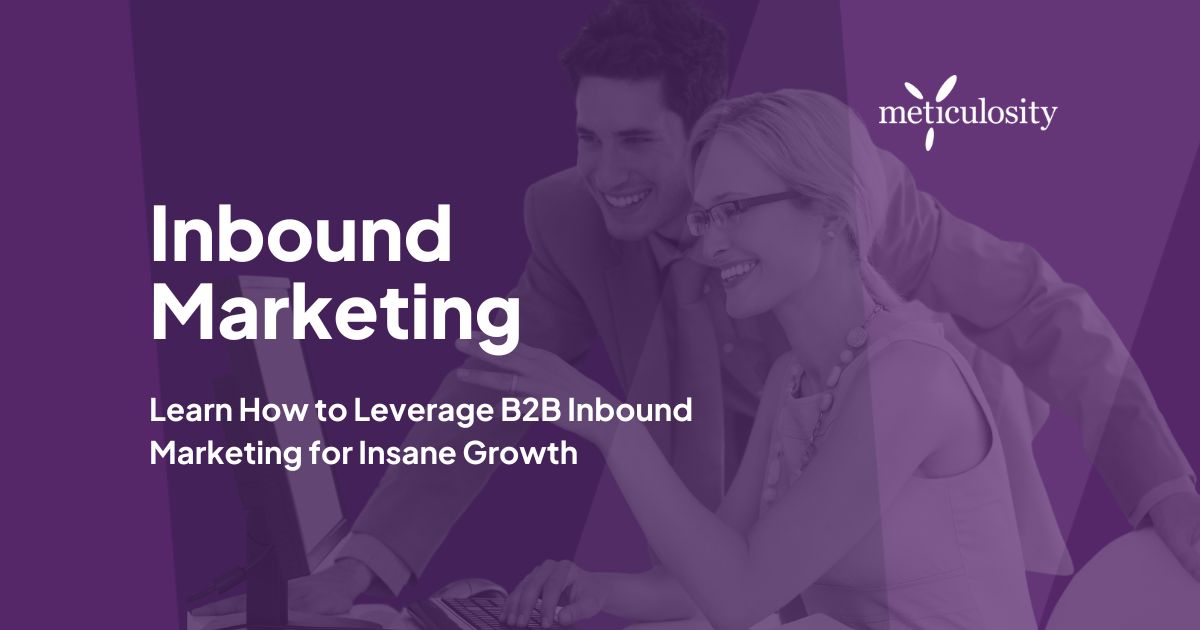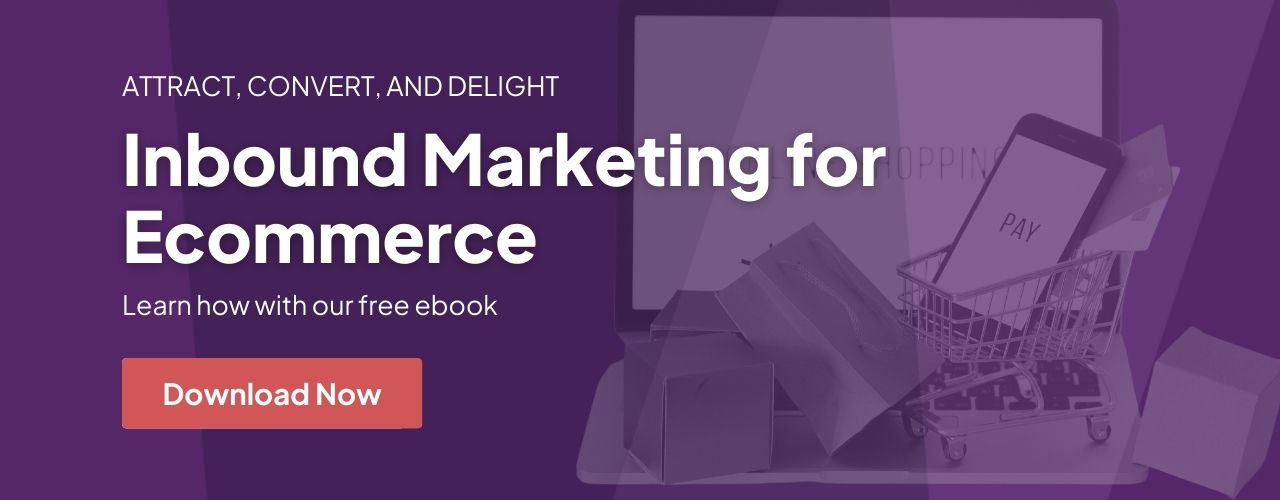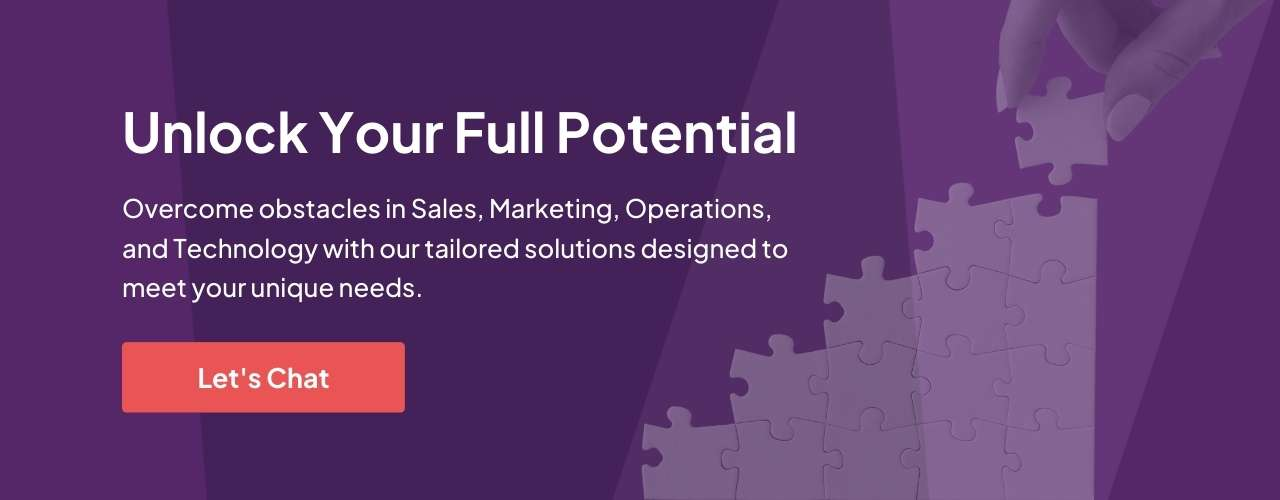B2B companies use inbound marketing 76 percent of the time, according to a HubSpot report. However, marketers have a problem proving that marketing leads to ROI.
In fact, lead attribution is the biggest challenge for most marketers today. Basically, B2B marketers need to look at the big picture and understand where there are breaks in their inbound marketing funnels.
How Do Businesses Use B2B Inbound Marketing
Inbound marketing is a strategy where you help business-to-business prospects instead of selling to them. It's a modern approach to marketing where we meet our B2B prospect on their terms in a helpful and human way.
The goal for B2B marketing is to gain our prospects trust first, then we can provide help.
Attract Prospects with Content
Way before a purchase and just before they realize they have a problem, you give them authoritative information like tutorials, tips sheets or guides that show them the best way to do something.
This content you create attracts potential customers via Google search, and as you educate or provide guidance, you can add relevant links to helpful internal or external resources.
Set SMART Business Goals
Many businesses don't realize they can capitalize more on inbound marketing by setting goals and using social media for engagement. You can develop more content that your audience will love and share it to them through free channels to get them more engaged.
Once they start thinking about this information, they may want to explore new products and other resources that you offer down the funnel through email marketing or other strategies.
Some examples of inbound marketing include:
- You set up an email subscription form that offers a free downloadable e-book if they complete the form. You place it on your website or Facebook page.
- American Express' OPEN forum offers a library of knowledge that customers go to for deeper insights and more information. Products and links to American Express services guide customers to make purchases or sign up for new accounts.
- SalesForce UK's new tutorials and human-focused stories make it easy for customers to see how the company is the leader in marketing technology.
- Customers can go to your Facebook and follow you to join a contest. You can build a customer audience group on Facebook ads based on your followers and sell specialized products to this group.
What Business Goals Should You Set for an Inbound Marketing Strategy
The typical goals for inbound marketers are the same as other campaigns:
- Find customers
- Make sales
- Grow your revenue
/Imported_Blog_Media/smart-goal-Jun-28-2021-10-51-28-29-PM.png?width=1200&name=smart-goal-Jun-28-2021-10-51-28-29-PM.png)
However you want to scale these goals down into manageable milestones. For example, perhaps you see a lot of potential on Facebook as a marketing channel. What inbound marketing resource could you use to leverage your followers? Perhaps there is a content or sign-up form you can create to show them that you have more expertise they can rely on.
Calculate your Marketing ROI
Many marketers find it difficult to calculate marketing ROI because they do not set goals in the beginning. If you know that you want more sign-ups, more revenue from a certain channel, or simply bigger returns, you have to be able to measure your campaigns. The best way to do this is to work backward from your ROI goals and see what your marketing team should be responsible for.
Important Metrics
The biggest metric for B2B marketing is the number of opportunities created by the campaign. This could mean customer acquisition, hot leads, or potential purchases. Some inbound strategies require very little investment. It's simply content marketing, where you show a piece of expert knowledge that earns you traffic on your website.
In other cases, you have a landing page with a form and a free incentive, and those sign-ups may be attached to a marketing campaign. You want a very low cost-per-lead for these sign-ups.
Nurturing Prospects
So the rule to remember is if you spend money on inbound strategies, then you need to make sure you nurture the leads appropriately. If you get sign-ups, are you sending an email marketing follow-up? Do those sign-ups go into a remarketing campaign? What other content are you marketing to this audience?
In addition, you should think about some other statistics including:
- Businesses with more 30 or more landing pages, likely segmented by different audiences, you'll get 7 times the amount of leads than businesses that only have 10 or less landing pages.
- Studies also found that businesses that blog 15 or more times per month get five times as much traffic than companies who do not even have a blog.
- Marketing research also found that companies with at least over 50 blog posts see an increase of leads by 77 percent.
So when you think about B2B marketing strategies, you should always consider your goals and what you want to happen. If you plan on spending real budget on campaigns, then you definitely want to know how you will measure the success beforehand.
How to Create a B2B Inbound Marketing Plan
As any B2B inbound marketing agency will tell you, many brands are using more direct methods to spread their content and make their products look more attractive. New ads are strategically shown to targeted audiences and show off their great content, which is typically videos that reveal expert advice and knowledge.
Most inbound marketing strategies revolve around content that the company publishes under social media channels, blog posts, email marketing, and video channels like YouTube.
The main components of B2B marketing strategies include:
- Company blog
- Company-created e-book or other downloadable resources
- Video tutorials or other expert knowledge
- Discounts or other incentives for special customer lists
- Social media ads and Google text ad campaigns
- LinkedIn campaigns
- Email marketing (Try MailChimp or Constant Contact)
- SEO strategy with landing pages that inform but also sell products
- Google Analytics or other third-party platforms that can provide reports on the campaign's success
- Webinar channel
- Google conversion pixel or Facebook conversion pixel
Marketing with Content
Hands down, content marketing is the biggest component in your marketing machine.
How do your customers like to receive their information?
Most B2B customers are executives, senior level staff or sales leaders who want to learn by seeing the proof, which may mean, demos or success stories via video marketing. In addition, you can combine video marketing with an email marketing series to nurture and direct traffic to specific pages on your website.
Webinars are another great vehicle for providing insider knowledge while also getting actively engaged with B2B leads.
Note: Webinars require careful planning and set. They can be hosted live or pre-recorded.
The Difference Between Inbound and Outbound Marketing Strategies
Here is a basic breakdown of these two different marketing strategies.
Inbound marketing strategies typically include:
- Blogging
- Social media posts
- SEO
- Online video marketing channels
- Webinars or e-books
- Email marketing
Outbound marketing strategies include:
- Telemarketing or cold calling
- Direct mail offers
- Trade show sign-ups
- Seminars
- TV commercials
The appeal of inbound marketing is easy to see. You don't have to sell anyone anything. Instead, you're helping them solve a problem with a longer-term goal of achieving something better.
Remember... "People don't buy their way into something, they buy their way out of something."
Create Relevant Content for SEO
So as I've mentioned our job as marketers is to help prospects first. We start by attracting good-fit search visitors when they are at the beginning of their B2B buyers journey.
We do this by aligning educational content to the search topics and phrases the prospect is already searching for. The trick is top further align your content with a product or service that you provide.
So, when our content becomes the answer to their search question, we create a no pressure environment, making it safe for visitors to explore and research without hard-selling a position. Then you can provide a relevant downloadable offer on your page/post to create a new B2B lead.
The B2B Marketing Message Means Everything
The final piece in a sound B2B marketing strategy is the way that you talk to your audience. Your campaign should be tailored to the customer and industry. This means that you need to use insider keywords, expert tips, and the right vocabulary to make an impact on your potential customer.
Since these are typically knowledgeable people in the business who want to improve upon a product or service, the best angle is to solve a major problem and explain it in a way that shows you are an authority on the topic.
While the message is typically the same for marketers, inbound marketing treats the customer as an expert speaking to another expert to get advanced knowledge. The goal is to show that you are an educator. Outbound marketing messages typically focus on making a sale and aren't always as effective if the target isn't looking for any new information.


/Imported_Blog_Media/inbound-marketing-1.jpeg)





